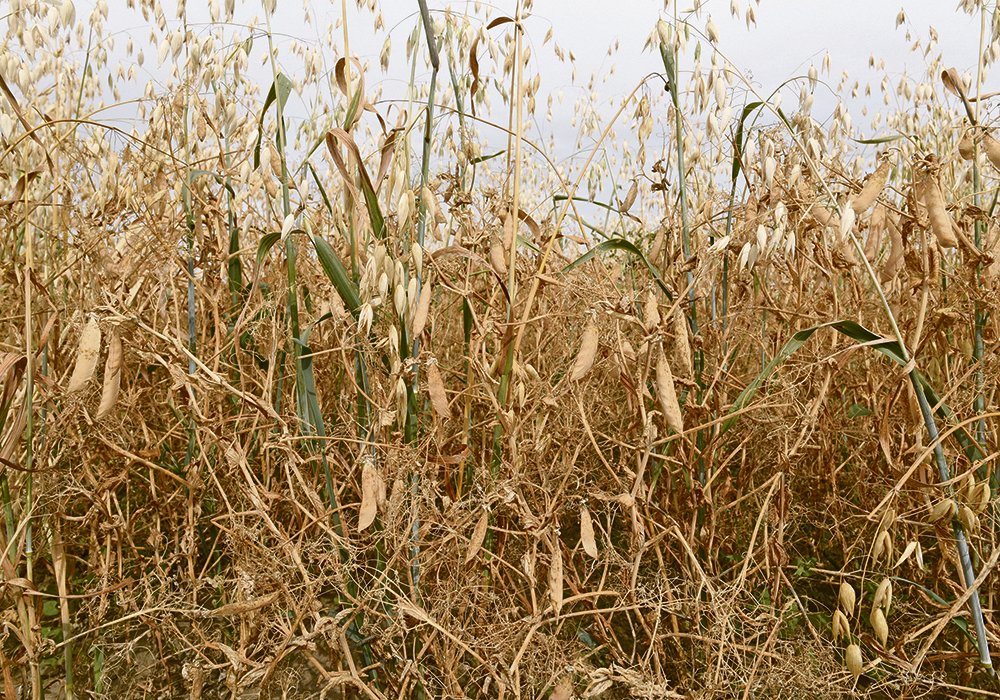Carbon sink efforts in a race against time

Glacier FarmMedia – It’s theoretically possible to turn Canadian agriculture into a net carbon sink for emissions as early as 2030, but producers would have to quickly overcome numerous challenges, says a researcher.
“We’re at the edge of a cliff,” said Joy Agnew, associate vice-president of applied research at Olds College in Alberta. “We need to drop off (emissions) and it’s an accelerated timeline, so we need to figure out a way to support this disruptive change.”
Why it matters: Climate change has major implications for the future of agricultural production and researchers are exploring ways to make land into a more effective sink for carbon dioxide.
As a speaker at the Aug. 10 AgSmart expo at Olds College, Agnew outlined the situation producers face.
Canadian agriculture has an estimated carbon footprint of about 85 million tonnes of carbon dioxide per year, she said. Modelling shows about a 30 per cent cut in emissions, or 26 million tonnes, could potentially be achieved by 2030 by adopting a wide range of farming practices, such as precision nitrogen application and livestock feed additives.
A further 62 million tonnes could potentially be removed through new or more vigorous carbon sequestration practices, such as conservation tillage and polycropping, for a total reduction of 88 million tonnes of CO2 per year, said Agnew.
“So theoretically, we could be a carbon sink by 2030, and that’s if all the projections are accurate and everything else, which is a great news story for ag,” she said in an interview. Certain sectors within agriculture “might actually already be a carbon sink, and we probably aren’t getting that message out well enough.”
Agnew told the audience at AgSmart that Canada’s CO2 emissions per pound of food produced are among the lowest in the world. However, agriculture is “an incredibly complex system … and realistically, it took 100-plus years for the ag industry to evolve to its current state.
“We have to shift things in less than 10 years in order to have a hope of meeting our emission reduction targets, which is paradigm shifting, and smart farms and technology development have a critical role to play in that paradigm shift.”
Her presentation came a day after release of an Aug. 9 report by the United Nations’ Intergovernmental Panel on Climate Change. It warned the world is close to runaway global warming, boosting the severity of extreme heat waves and drought.
Canada’s greenhouse gas emissions now total about 740 million tonnes of CO2 equivalent per year from all sectors, which range from agriculture to energy and transportation. Federal targets aim to cut that amount to 400 million tonnes per year by 2030, with a further reduction to net zero by 2050.
Although Agnew said the targets are “definitely ambitious,” she added “if COVID has taught us anything, when mandates and policies and decision-making at the highest levels all come together to achieve one thing, we can do some pretty amazing things. But is it realistic? Is it achievable? I honestly don’t know.”
If Canadian agriculture managed to sequester or avoid 88 million tonnes of CO2 per year above current practices, it could theoretically earn almost $4.4 billion per year in offset revenue based on $50 per tonne, Agnew said.
However, she likened the complexity of carbon offset systems for farmers to “a big rabbit hole, and honestly, I don’t think we’ll ever be able to get an offset system in place for agriculture under the current way offset structures are set up with that requirement for verification and permanency, and all of the due diligence and the record keeping and all that stuff that’s required.”
One of the problems facing producers is the varying estimates of agriculture’s current share of greenhouse gas emissions, she said. Environment and Climate Change Canada has described it as eight per cent, while the National Greenhouse Gas Inventory report has listed it as 11 per cent.
Although the estimates are relatively close, they illustrate how “we don’t fully understand where we’re at because it really depends on how you draw the envelope and how you calculate it, and it’s extremely difficult to manage and control what you can’t consistently measure or calculate,” said Agnew.
Farmers face the dilemma of cutting emissions while continuing to provide enough food for a growing world population.
“I don’t think there’s ever going to be an all or nothing solution. It’s not going to be like we can all become vegetarians or we all need a transition to organic farming…. It’s going to be (that) we adopt the right practices, the right behaviours, the right technologies for the right situation in order to reduce the overall footprint.”
This article was originally published at The Western Producer.
Source: Farmtario.com

